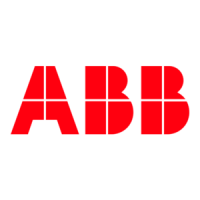Why is my ABB Industrial Equipment experiencing a sluggish start-up?
- VValerie ChanSep 12, 2025
A sluggish start-up in ABB Industrial Equipment can occur due to several reasons. It might be caused by a contaminated turbocharger, in which case you should clean it. Alternatively, it could be due to a damaged bearing, requiring you to contact an ABB Turbocharging Service Station. Other possible causes are a rubbing rotor or a foreign object in the turbocharger.

